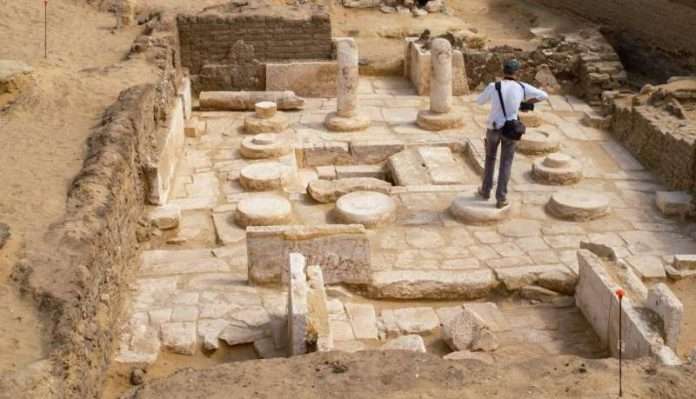The Ministry of Tourism and Antiquities in Egypt announced the discovery of the tomb of a person named Banahsi from the Ramesside period during a joint archaeological mission from the Leiden Museum in the Netherlands and the Egyptian Museum in Turin, working in the Saqqara antiquities area in Giza,
The Secretary-General of the Supreme Council of Antiquities, Dr. Mustafa Waziri, said that the mission discovered a number of “palaces” dating back to the same time period, which would contribute to shedding light on the development of the “Saqqara cemetery” during the Ramese period, which unveils new people who they said are known, and the discovery supports previous theories that suggest that the space between the tombs of the Eighteenth Dynasty was reused in later eras and tombs and chapels were built in it during the Ramese period, whose inscriptions shed light on the funerary practices of the dead during that period.
The Director of Saqqara Antiquities, Dr. Mohamed Youssef, said that the discovery takes the form of a self-contained temple, and the cemetery has a “gate”, and an inner courtyard that contains the bases of stone columns and a well that leads to the underground burial chambers, and 3 adjacent chapels.
The director of the Egyptian Museum in Turin, the head of the mission from the Italian side, Dr. Christian Greco, stated that inside the tomb he found a painting depicting the owner of the tomb Banhasi and his wife Paya, who bore the title of the singer of Amun, including a beautiful scene of Banhasi worshiping the goddess Hathor, and below it is a scene depicting Banhasi and his wife Paya together in front of an offering table, and a bald man stands in front of them with a leopard skin around his shoulders, in addition to a number of scenes of priests and offerings.
For his part, the curator of the Egyptian and Nubian collection of the Leiden Museum in the Netherlands, Dr. Lara Weiss, said that the mission revealed the remains of 4 small chapels, 2 of which contain a number of inscriptions, one of which is of a person called Yoyo, and despite its small size, it contains a number of scenes.
The inscriptions, which are characterized by their accuracy and the quality of their details, are in a good state of preservation, and there is a view of the yoyo funeral procession and the revival of a mummy again to live in the other world, and a view depicting the cow of the goddess Hathor and a boat of the god Suker, the god of the cemetery, and it is likely that the cabin was reused in later ages, which explains the extent of the destruction that was inflicted on it. As for the second booth, it belongs to an unknown person so far, and it contains a very rare carved inscription of the owner of the booth and his family. The other two booths are completely devoid of inscriptions.

















